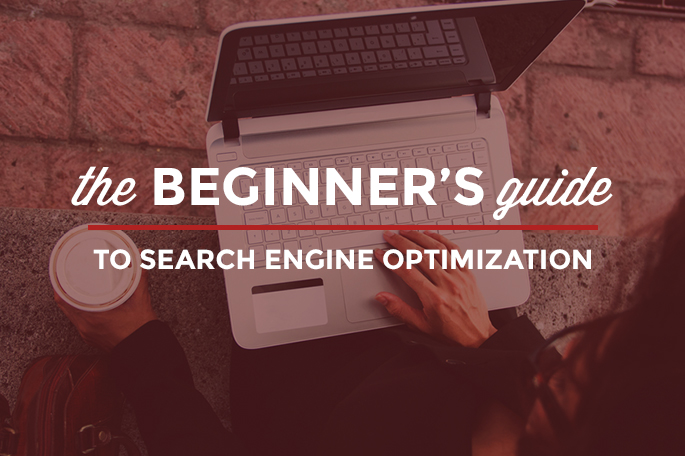The search engines constantly strive to improve their performance by providing the best possible results. While “best” is subjective, the engines have a very good idea of the kinds of pages and sites that satisfy their searchers. Generally, these sites have several traits in common:
- Easy to use, navigate, and understand
- Provide direct, actionable information relevant to the query
- Professionally designed and accessible to modern browsers
- Deliver high quality, legitimate, credible content
Despite amazing technological advances, search engines can’t yet understand text, view images, or watch video the same way a human can. In order to decipher and rank content they rely on meta information (not necessarily meta tags) about how people interact with sites and pages, and this gives them insight into the quality of the pages themselves.
The Impact of Usability and User Experience
On search engine rankings
There are a limited number of variables that search engines can take into account directly, including keywords, links, and site structure. However, through linking patterns, user engagement metrics, and machine learning, the engines make a considerable number of intuitions about a given site. Usability and user experience are second order influences on search engine ranking success. They provide an indirect but measurable benefit to a site’s external popularity, which the engines can then interpret as a signal of higher quality. This is called the “no one likes to link to a crummy site” phenomenon.
Crafting a thoughtful, empathetic user experience helps ensure that visitors to your site perceive it positively, encouraging sharing, bookmarking, return visits, and inbound links—all signals that trickle down to the search engines and contribute to high rankings.
Signals of Quality Content
1. Engagement Metrics
When a search engine delivers a page of results to you, it can measure the success of the rankings by observing how you engage with those results. If you click the first link, then immediately hit the back button to try the second link, this indicates that you were not satisfied with the first result. Search engines seek the “long click” – where users click a result without immediately returning to the search page to try again. Taken in aggregate over millions and millions of queries each day, the engines build up a good pool of data to judge the quality of their results.
2. Machine Learning
In 2011 Google introduced the Panda update to its ranking algorithm, significantly changing the way it judged websites for quality. Google started by using human evaluators to manually rate thousands of sites, searching for low quality content. Google then incorporated machine learning to mimic the human evaluators. Once its computers could accurately predict what the humans would judge a low quality site, the algorithm was introduced across millions of sites spanning the Internet. The end result was a seismic shift that rearranged over 20% of all of Google’s search results. For more on the Panda update, some good resources can be found here and here.
3. Linking Patterns
The engines discovered early on that the link structure of the web could serve as a proxy for votes and popularity; higher quality sites and information earned more links than their less useful, lower quality peers. Today, link analysis algorithms have advanced considerably, but these principles hold true.

All of that positive attention and excitement around the content offered by the new site translates into a machine-parseable (and algorithmically-valuable) collection of links. The timing, source, anchor text, and number of links to the new site are all factored into its potential performance (i.e., ranking) for relevant queries at the engines.
Crafting Content
For search engine success
“Develop great content” may be the most oft-repeated suggestion in the SEO world. Despite its clichéd status, though, this is sound advice. Appealing, useful content is crucial to search engine optimization. Every search performed at the engines comes with an intent—to find, learn, solve, buy, fix, treat, or understand. Search engines place web pages in their results in order to satisfy that intent in the best possible way. Crafting fulfilling, thorough content that addresses searchers’ needs improved your chance to earn top rankings.
Search Intent Flavors
Search intent comes in a variety of flavors …


Transactional Searches
Identifying a local business, making a purchase online, or completing a task.
Transactional searches don’t necessarily involve a credit card or wire transfer. Signing up for a free trial account at Cook’s Illustrated, creating a Gmail account, or finding the best local Mexican cuisine (in Seattle it’s Carta de Oaxaca) are all transactional queries.
Navigational Searches
Visiting a pre-determined destination or sourcing a specific URL.
Navigational searches are performed with the intent of surfing directly to a specific website. In some cases, the user may not know the exact URL, and the search engine serves as the White Pages.


Informational Searches
Researching non-transactional information, getting quick answers, or ego-searching.
Informational searches involve a huge range of queries from finding out the local weather to getting maps and directions to finding out how long that trip to Mars really takes (about eight months). The common thread here is that the searches are primarily non-commercial and non-transaction-oriented in nature; the information itself is the goal, and no interaction beyond clicking and reading is required.
Fulfilling these intents is up to you. Creativity, high-quality writing, use of examples, and inclusion of images and multimedia can all help in crafting content that perfectly matches a searcher’s goals. Your reward is satisfied searchers who demonstrate their positive experience through engagement with your site or with links to it.
- How Search Engines Operate
- How People Interact With Search Engines
- Why Search Engine Marketing is Necessary
- The Basics of Search Engine Friendly Design & Development
- Keyword Research
- How Usability, Experience, & Content Affect Rankings
- Growing Popularity and Links
- Search Engine’s Tools for Webmasters Intro
- Myths & Misconceptions About Search Engines
- Measuring and Tracking Success
To access the INTRO page, click here.
If you want to Master SEO, check this:

Written by Rand Fishkin and Moz Staff
